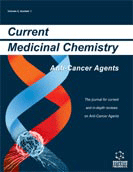Abstract
The natural plant product ellipticine was isolated in 1959 from the Australian evergreen tree of the Apocynaceae family. This compound was found to be an extremely promising anticancer drug. The planar polycyclic structure was found to interact with DNA through intercalation, exhibiting a high DNA binding affinity (106 M-1). The presence of protonatable ring nitrogens distinguished ellipticine from other simple intercalators. Both monocationic and uncharged species were found to be present under physiological conditions. The positive charge stabilized the binding of ellipticine to nucleic acids, while the more lipophilic uncharged compound was shown to readily penetrate membrane barriers. The structural nature of these compounds offers a plausible basis for the implication of multiple modes of action, including DNA binding, interactions with membrane barriers, oxidative bioactivation and modification of enzyme function; most notably that of topoisomerase II and telomerase. Pharmacologically, a number of toxic side effects have been shown to be problematic, but the amenability of ellipticine towards systematic structural modification has permitted the extensive application of rational drug design. A number of successful ellipticine analogs have been designed and synthesized with improved toxicities and anticancer activities. More recently the synthetic focus has broadened to include the design of hybrid compounds, as well as drug delivery conjugates. Considerable research efforts have been directed towards gaining a greater understanding of the mechanism of action of these drugs that will aid further in the optimization of drug design.
Keywords: ellipticine, anticancer, plant alkaloid, dna binding, bioactivation, topoisomerase II
 10
10

















